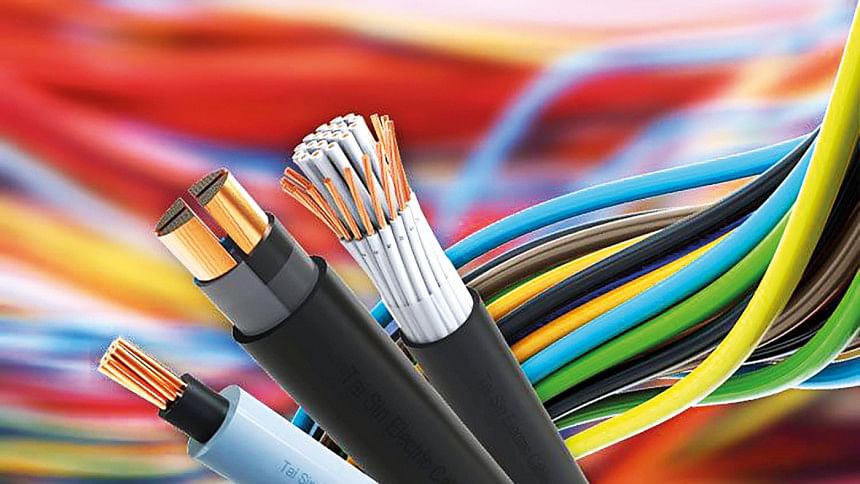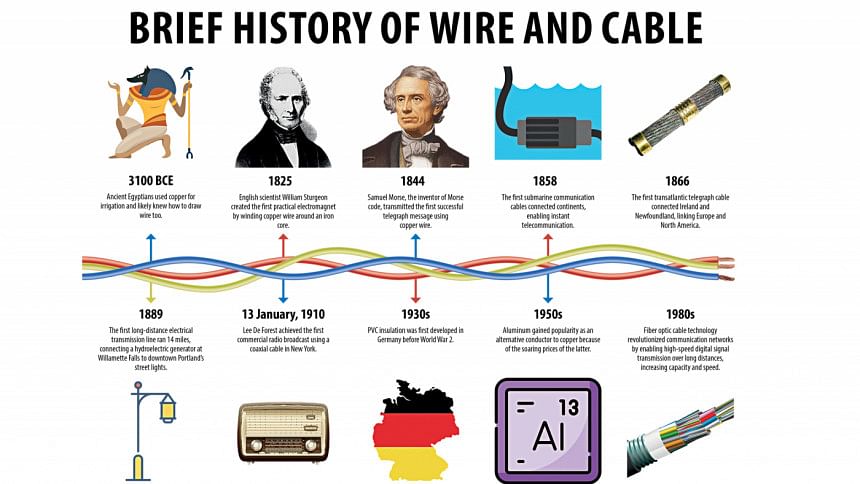Cables Of The Future: Advancements in Bangladesh’s Cable Industry

Amidst the constantly evolving technology, the cable sector has undergone a remarkable evolution, embracing new innovations. Bangladesh's cable industry, too, has experienced a significant transformation, aligning itself with the global transformations. From the seamless integration of state-of-the-art manufacturing techniques to the production of top-tier cables, this article delves deep into the transformative journey of Bangladesh's cable industry, highlighting the profound impact of cutting-edge technologies on reshaping its landscape.
When talking about technological advancement, the first reflection can be seen in machine upgrading. Previously, the manufacturers of the Bangladesh cable industry used traditional methods with a single extrusion line. The scene has changed with the adoption of the triple extrusion process, which is called CDCC (Continuous Dry Curing and Cooling). "There are two lines which are Catenary Continuous Vulcanization (CCV) and Vertical Continuous Vulcanization (VCV). VCV line is used for extra-high-voltage cables. And CCV line is used for medium-voltage cables. This technology was introduced in Bangladesh almost ten years back by a Chinese company. Partex Cablex brought the CDCC CCV line in 2016 from Maillefer, Finland," shares A K M Ahsanul Haque, Chief Operations Officer, Partex Cables.
"Previously, curing was done in steam. But now nitrogen is used for dry curing. This international technological advancement has also reached our country," he adds.
The local manufacturers increased their production capacity with machine development. And with that came advancements in cable materials, whether it's household wires, building wiring, communication, or industrial cables.
With Flame Retardant PVC, Flame Retardant Low Smoke (FRLS), and Low Smoke Zero Halogen (LSZH) cables, domestic wires have become safer. Flame Retardant cables resist the spread of fire into a new area, while FRLS and LSZH cables have a flame-resistant jacket that doesn't emit toxic fumes, even if they burn. In most cases of fire accidents, people die from toxic smoke rather than the fire itself, as ordinary PVC emits black smoke and toxic fumes that are acidic in nature.
"In 2017, BBS Cables Limited launched fire-resistant FR skin-coated cables. Before that, cables were made with colored mixing PVC, which consisted of combustible materials. The FR skin-coated cable has a coat of virgin PVC in white color around the pure copper, secluded from any combustible materials, and a color coating as the final layer. A special characteristic of this cable is that it does not let the fire spread beyond 1ft in case of any short-circuit," explains Rabiul Kamal, head of brand at BBS Cables Limited. He also claims it to be the safest domestic cable wire.
"We also produce UV-protected domestic cables, which are used outside. UV protection shields the cable from UV rays as well as the heat from the sun," he adds.
Adding to the list, Mohit Chakroborthy, AGM Marketing at Bizli Cables, says, "Bizli Cables offers XLPO insulation which can withstand up to 125 centigrade temperatures, mostly used in industries where the cables have to carry high-voltage electricity."
Mohit further shares that Bizli Cables is working towards making robotic cables and torsion cables that can endure high mechanical stress for the robotic industry. "We are also developing medium cross-section aluminum cables to be used in vehicle wiring systems," he adds.
One of the biggest developments in the cable industry is underground cables, which will eventually reduce the electric jungle that is so common on city streets. "Our government has already started to work on underground cables, which is a huge technological advancement in the cables industry. These cables come in two voltages: 11Kv and 33Kv. Earlier, our country used to manufacture up to 11kv, but at present, many companies are manufacturing 33kv+ capacity with CDCC line," says Ahsanul Haque.
He goes on to say, "We are preaching a Digital Bangladesh, and we are also working towards it. In this case, cables play a great role. There are two types of communication cables: fiber optic and Cat 5 (Category 5)." Currently, several Bangladeshi cable companies are producing optical fiber cables and Cat 5 cables.
The future of the Bangladesh cable industry seems electrifying with new possibilities. However, Engr. Md. Muhaimin, Assistant Professor & Head of the EEE Department at Bangladesh University, feels that Bangladesh still has a long way to go in the case of research and development of the cable industry. Most of the power laboratories in the country are not equipped for practical work. "There are a few universities that have well-equipped power labs. Yet, those are limited only to testing. To efficiently develop a product is quite hard with the available facilities," he adds.


 For all latest news, follow The Daily Star's Google News channel.
For all latest news, follow The Daily Star's Google News channel. 



Comments